Sound insulation and acoustics with glass doors
Why sound insulation?
Noise makes people ill. Particularly loud noise sources affect the psyche just as much as the sum of all ambient noise. Sound insulation is also possible with glass doors - here's how.
How a glass door affects the building and room acoustics depends on many factors - an overview.
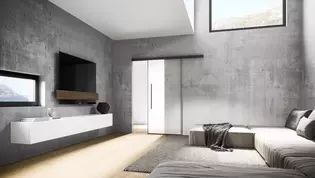
Product advice
How to find the best glass door for quiet living.
1. Select glass door system
Which glass door system for the best sound insulation?
A distinction is made between hinged glass doors, sliding glass door systems and wooden doors with a light cut-out. In principle, hinged doors close more tightly with the frame than sliding doors and therefore offer more sound insulation than sliding doors. With sliding doors, a gap remains between the wall and the door leaf, through which sound waves also pass. With Planeo Air Silent, however, Griffwerk offers a glass sliding door system that keeps out sound just as effectively as a wooden door. This is made possible by rubber lips on the sides. A good compromise between a wooden and a glass door is a wooden swing door with a light cut-out.
Door systems in comparison
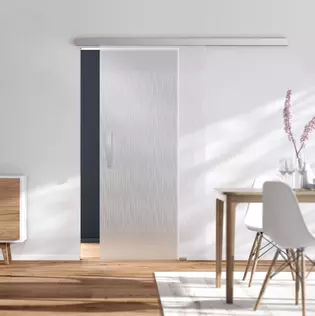
Sliding doors
- Modern look
- Save space
- Sliding doors are available with sealing system
- Soft closing to prevent banging
- Pay attention to quiet running noises
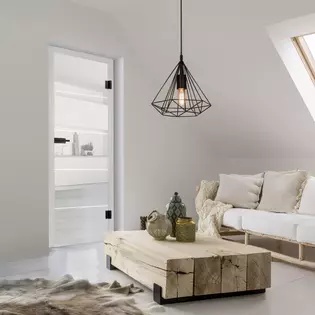
Revolving glass doors
- Closing tight
- LSG offers more sound insulation
- Frames with sound insulation
- Lock cases with whisper latch
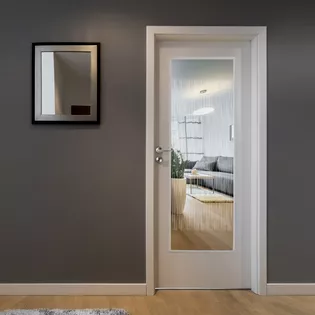
Light cut-outs
- Advantages of wooden and glass doors
- LSG offers more sound insulation
- Less light than all-glass door
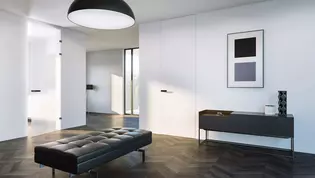

More recreation for all
There are many moments in our lives when we would like to be alone. It's good to have thought about doors with sound insulation during the planning phase.
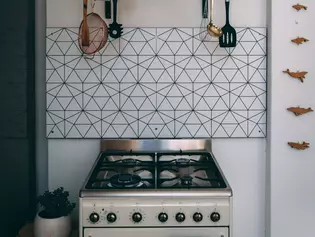
Practical
Tightly closing glass doors such as PLANEO AIR SILENT are not only pleasant in terms of sound insulation. They also prevent the spread of:
- Kitchen smells
- Draughts and
- Water vapour in bathrooms
1.1 Sliding door systems
Sliding door systems not only save space but also offer privacy and sound insulation. However, most sliding door systems run in front of the wall and therefore do not close tightly. Sound can spread through the open gap. Systems that run in the wall are more effective, but costly to install. There are also pocket systems that are functional but not particularly aesthetic. With Planeo Air Silent, Griffwerk has developed a puristic and tightly closing sliding door system that offers sound insulation.
Systems in comparison
Running in the wall
- Simple appearance but high costs
- Complex maintenance and assembly
- Hardly demountable
- Expensive for renovations
- More space required
Slide-in systems
- Unattractive appearance
- No contemporary design
- High material costs
- More assembly effort
System Planeo Silent
- Minimalist look
- Ideal seal
- Easy installation on the wall
- Can be dismantled (rented flats)
- Little space required
- Many sizes
Planeo Air Silent
The tightly closing Planeo Air Silent sliding door system keeps out sound as well as kitchen odours, water vapour and draughts and is comparable to a wooden door in terms of sound insulation. The look is minimalist and simple.
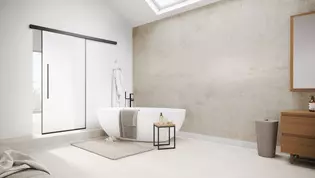
How Planeo Air Silent works:
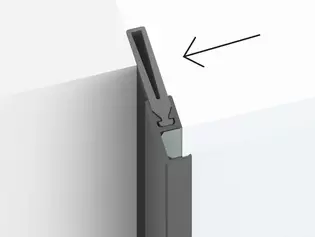
Tightly closing sliding door thanks to side closure
The almost gapless closure is achieved by narrow rubber lips on the sides. On the opening side, these directly adjoin the reveal. On the opposite side, an aluminium angle provides the necessary stop.
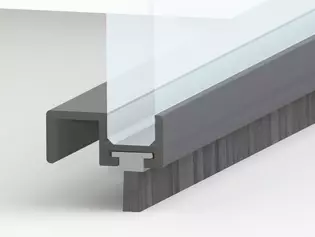
No bottom gap
The lower edge of the glass door has been fitted with a floor brush. All elements are kept in minimalist filigree and do not disturb the simple look.
Sound insulation for kitchen, bathroom, hallway, TV room and home office...
Many application possibilities
At room transitions to the kitchen, the sealing glass door system keeps out unpleasant odours. Draughts are prevented in entrance areas. This way, heat zones can be well demarcated, which saves heating costs. In bathrooms, a lot of water vapour is produced which should not spread into the hallway or the adjoining bedroom. Damage due to moisture or mould is thus prevented.
Also for renovations?
PLANEO AIR SILENT glass door system does not require a special frame solution. It can be easily retrofitted, can be dismantled and is therefore also suitable for renovations.
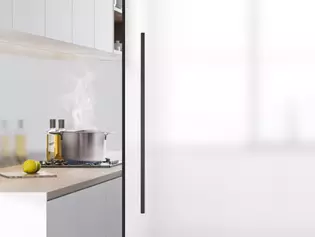
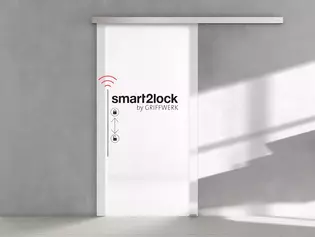
Lockable with Planeo smart2Lock
Planeo Air Silent can be optionally equipped with the PLANEO Smart2lock handle bar and is then even lockable. A button placed on the narrow handle bar activates the locking function. Additional floor anchors are unnecessary. The design is by Studio Relvao Kellermann.
In three surfaces
PLANEO AIR SILENT is available in three colour shades: velvet grey (stainless steel look), graphite black and cashmere grey.
This is what you should look out for:
Soft closing to prevent knocks
Sliding door systems with soft closing are gently braked when closing. The door cannot hit the floor. This protects the glass door and prevents unpleasant banging noises. The door is gently pulled into the stop position and held there. This offers more comfort and is also quieter.
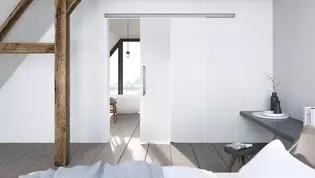
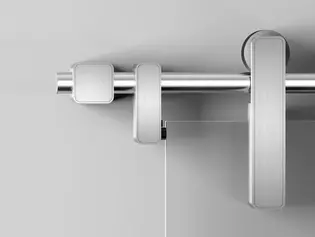
Quiet running noises
Glass doors of a sliding door system are hooked into a roller mechanism. The rollers run over a rail when opening and closing. The sound of the rollers on the track alone is very loud in simple systems. An unclean mechanism causes the door to literally shake. This causes vibrations that generate unpleasant noises.
1.2 Glass revolving door systems
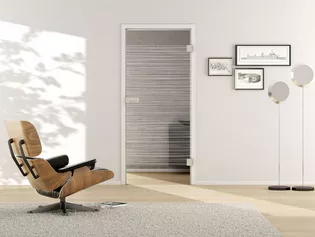
How soundproof are glass doors?
In principle, all-glass revolving doors can provide sound insulation up to class 3 (SK3 according to DIN 4109). The totality of all elements defines the sound insulation properties. A door leaf made of LSG glass insulates better than simple single-pane safety glass (TSG). Glass reflects sound back into the room rather than letting it through. This also speaks in favour of glass: the material has no cavities and is difficult to vibrate, which would amplify sound.
Bottom gap must be
For revolving glass doors, a small floor clearance must be maintained, as otherwise dirt particles, such as small stones, could damage the more sensitive glass edge. There are brush systems that can be retrofitted and are available for many door sizes. However, they detract from the appearance. It is simpler to compensate for the nevertheless minor disadvantages of the floor gap by using sound-absorbing materials in the rooms. Fluffy carpets and beautiful curtains stop the noise development already in the room itself.
Which glass for the best sound insulation?
LSG glass doors are generally thicker than TSG doors and have a higher sound insulation value for this reason alone. The sound insulation value of a glass door is influenced by the weight and thickness of the glass, the material rigidity and the space between the panes (the so-called SZR in the case of multi-layer construction). Detailed information on suitable glass types for sound insulation and acoustics can be found here.
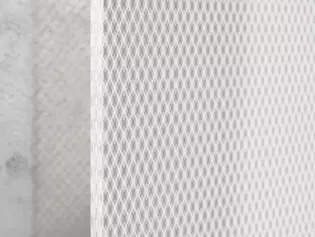
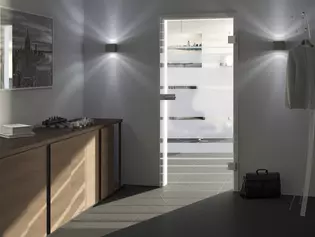
Tip: Weak point in the flat entrance door
Especially in apartment buildings, noise from the stairwell penetrates into the private living area. Noise is amplified on the bare walls and smooth stone tiles of the stairwells. If you are unlucky, you even have to put up with footsteps from your neighbours. The further down you live, the more frequently house residents pass by your own door. A second glass door to the living area can serve as a further noise barrier. It also provides a bright reception in the hallway.
Lock cases for quiet living
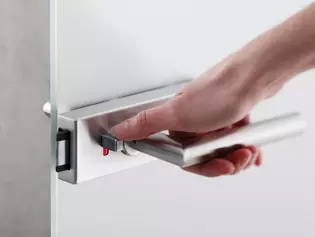
No loud banging
Hitting a door when it closes can cause rattling noises. High-quality fittings have a whisper latch and a softly adjustable return mechanism for the handle.
Whisper latch
Glass lock cases from GRIFFWERK are equipped with a special whisper latch that softens the stop of the latch in the door plate. Any stop can cause the glass to vibrate and generate unpleasant, clanging noises.
Soft return of the handle
The door handle should never hit hard when released and thus cause the door to rattle. Absentive return mechanisms in the glass lock cases from GRIFFWERK ensure that the handle is gently returned to its original position. The mechanism can even be finely adjusted in the PURISTO S lock case.
Tips for frames
Sound can penetrate through the smallest gaps. Therefore, door frames and revolving doors must be matched to each other.
What is a frame?
The frame is the construction of a revolving door that is firmly anchored to the wall. It protects the wall reveal and ensures that the door fits snugly. The edge on the door side has small steps that allow the door to stop in the frame. The steps ensure that the door does not swing. This is called the rebate.
Steel or wooden frame?
The material of a frame is less decisive with regard to sound insulation. More important is the seal between the frame and the door leaf. You should also pay particular attention to this when mounting: There should be no cavities between the wall and the frame that are permeable to sound.
Do I need a sound insulation frame?
Special soundproof frames complete soundproof doors, but only make sense for higher soundproofing classes. They have a multi-stage rebate. The more steps, the more often the sound is deflected and thus stopped. For glass doors, a frame with a single rebate is sufficient because the door edge is narrow and not stepped. Manufacturers of wooden doors offer suitable frames with a single rebate. All standard dimensions are adapted to glass doors. Improved sound insulation can be achieved with a good seal. Simply ask your door specialist for suitable systems for optimum sound insulation. Another tip: Check seals in frames regularly and replace brittle or defective strips.
1.3 Doors with light cut-out
What is a light cut-out?
A light cut-out is a glass insert in a wooden door. It lets light through and thus enables better use of daylight. Another term is "glass cut-out" or "light opening". Light cut-outs are available in various sizes and divisions. The decors can be chosen individually. The type of glass can also be selected according to taste.
How soundproof are doors with a light cut-out?
There is no general answer to this question. First of all, the type of basic door plays a role. Laminated safety glass should be chosen for the light cut-out. Doors with a light cut-out are a good compromise between a wooden and glass door, but allow less light to pass through. As always, the sound insulation quality is determined by the totality of all construction elements. A plus for doors with a light cut-out: Multiple rebated door leaves and frames can be installed, which close very tightly.
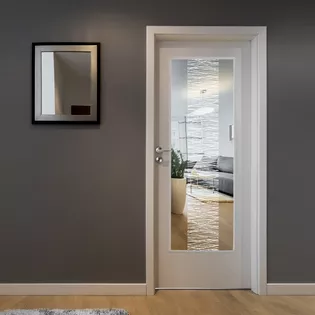
2. Select glass type
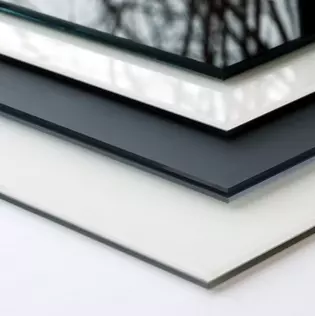
Which glass offers the best sound insulation?
LSG doors offer more sound insulation. They consist of two TSG panes and are thicker. Safety glass is always used for doors. Both TSG (toughened safety glass) and LSG (laminated safety glass) belong to this category. These two types of glass differ in structure but also in their sound insulation properties.
What is the difference between TSG and LSG?
TSG is the abbreviation for toughened safety glass. It is a thermally toughened glass. Due to the processing, it is particularly robust and insensitive to impacts on the surface. If damaged, it breaks into small crumbs, comparable to the windows of a car. This prevents deep, serious cuts.
A LSG door consists of two TSG panes that have been joined by a film. In the case of a LSG glass door, all the shards adhere to the composite film in the event of breakage. The glass splinters do not fall into the room. The door continues to hang in its anchorage. Inner foils for LSG glass are so efficient that they are also used for burglary protection glass and are produced in bullet-proof variants. LSG-Prime doors from Griffwerk combine the security properties of toughened and laminated glass.
Quietly: Glass doors made of LSG
Premium glass doors from Griffwerk are made of double-layer laminated safety glass (LSG). The double structure reduces the permeability of sound because the elastic inner film absorbs vibrations. LSG glass is therefore even used for soundproof windows. They also perform this service as interior doors. The thickness of the double-layered glass also gives the doors "heaviness". The sound when closing the door seems quieter and of higher quality, comparable to the door of an expensive car. At the same time, the inner film acts like a cushion that absorbs the sound that occurs when the door is banged and prevents rattling noises.
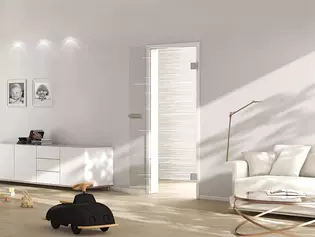

How does LSG change the room acoustics?
The double structure of a LSG pane prevents the transmission of sound. The propagation into the next room is significantly reduced. However, glass reflects sound, i.e. it is reflected back into the room. Large glass surfaces, whether windows or doors, should therefore be combined with sound-absorbent materials. However, the sound-reflecting effect of a door plays a minor role compared to the ceiling, floors and walls.
Room planning and acoustics
If you want to live quietly, healthy and relaxed, you have to consider the following points when planning your room:
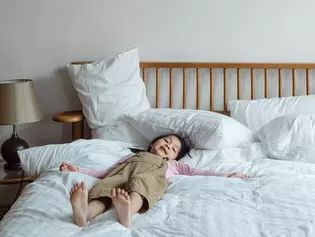
1. Creating good room acoustics
In rooms with good room acoustics, there is little reverberation. Sound is absorbed by the insulating materials in the room. Rooms in which it can sometimes get louder should always be furnished in a sound-absorbing way. Soft fabrics, cushions, carpets and curtains absorb sound.

2. Directly plan borderrises
When planning the floor plan, pay attention to the location and layout of the rooms. Lively rooms should not be located next to rooms where people want to rest or concentrate. There must also be a sufficient number of retreat rooms for all occupants. The typical time and type of use of the adjoining rooms must also fit.
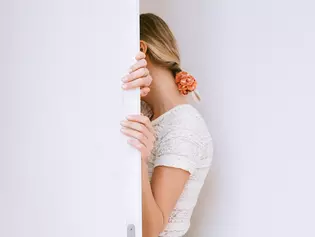
3. Minimise transmission from room to room
Here, attention should already be paid to suitable materials during the construction planning. The type of construction of the walls also plays a role. Simple drywalls offer little protection. Impact sound is perceived as very loud, especially in rooms below. In addition, one should carefully consider how open a floor plan is kept. With a transparent glass door, rooms can also be closed at times.
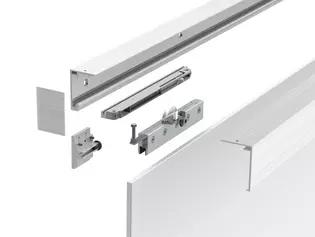
4. Reduce noise generation
It is optimal if there is as little disturbing noise as possible. Also pay attention to smaller sources of noise. Especially rather inconspicuous and permanently recurring everyday noises, such as creaking floors or loudly rolling sliding door systems, are subliminally perceived as particularly unpleasant and can be easily avoided.
Inspiration
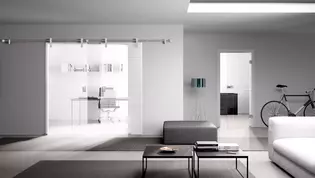
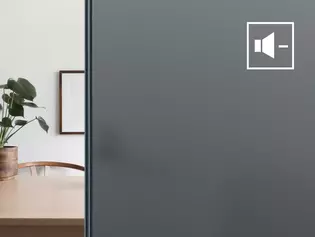
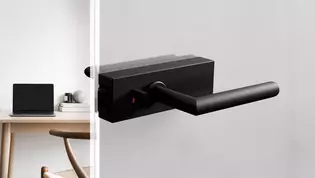
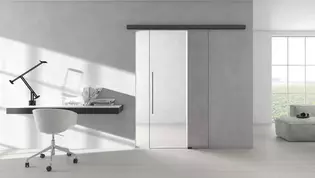
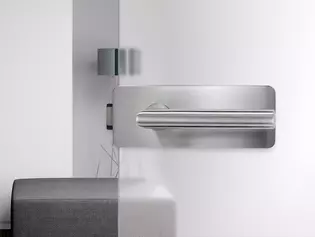
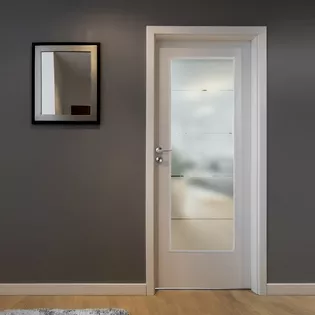
Interesting facts about glass doors, acoustics and sound insulation
How soundproof is glass?
Glass can generally repel sound well and thus prevent transmission. Special window panes are predestined for even the most demanding sound insulation tasks. They are made of several panes of different thicknesses (so-called asymmetrical construction) and are connected by an elastic inner film. LSG doors also consist of several layers and an elastic inner film. They therefore have good sound insulation properties and are more suitable than, for example, simple toughened glass doors.
Which doors offer more sound insulation?
The more mass a door has, the more sound-absorbing the material is and the better the door seals, the better it protects against noise. Wooden doors are thicker but not generally more sound-absorbent than glass doors. With sliding doors, it is important to use a suitable sealing system. It closes the open gap between the door leaf and the wall.
What is a whisper latch?
A whisper latch is a door latch that has been partially coated with plastic. The plastic dampens the impact of the metal latch in the lock. Doors can thus be closed "whisper quietly". Whisper latches are available for door handles for wooden doors as well as for glass lock cases on all-glass doors.
Is a sliding door soundproof?
Because of the lateral opening between the wall and the door leaf, simple sliding doors offer less protection against sound. Sealing systems compensate for this disadvantage. However, many of these systems are very elaborate and interfere with the appearance. For PLANEO AIR SILENT, an almost invisible slat system was developed, which is integrated into the surrounding, narrow frame. PLANEO AIR SILENT therefore offers good sound insulation and even keeps out water vapour, draughts and odours.
What is noise protection?
Sound insulation includes all measures that reduce unwanted sound in rooms. On the one hand, the measures influence the penetration, generation and propagation of sound in rooms requiring protection. Sound pollution can be minimised by the building, but can also be improved by the room furnishings.
What influences the sound insulation value of a glass door?
The sound insulation value of a glass door is influenced by the weight and thickness of the glass, the material rigidity and the space between the panes (the so-called SZR in the case of multi-layer construction). LSG glass doors are generally thicker than TSG doors and have a higher sound insulation value for this reason alone. The two-layer structure creates an intermediate space that is filled with an elastic film. This absorbs sound. The connection is stable but elastic.
How can you check the room acoustics?
The easiest way to assess the room acoustics is to clap your hands. Depending on the room, the sound echoes clearly, seems louder or only muffled. In empty rooms, the noise is of course always stronger than when the room is furnished. This is due to the larger, free reflection surfaces that reflect the sound back. The popular large windows, bare walls and possibly bare concrete floors of modern architecture unfortunately make rooms seem particularly reverberant, which reduces the quality of living. On the other hand, care should be taken to use sound-absorbent materials in the furnishings. Anyone who needs a precise analysis should consult a specialist.